newborn intensive care (NICU)
Dayton Children’s NICU delivers advanced and compassionate family-centered care for premature and critically ill newborns.
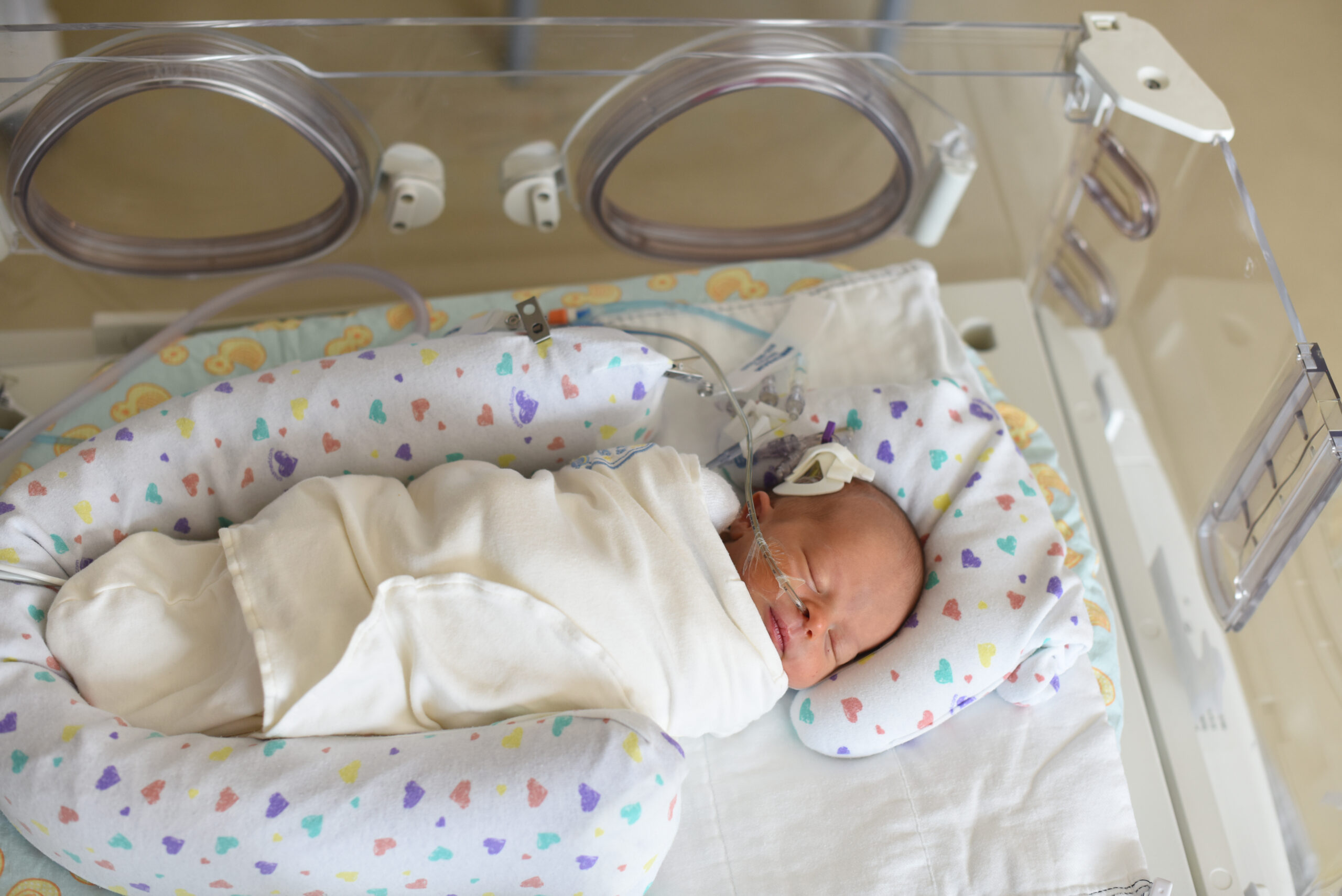
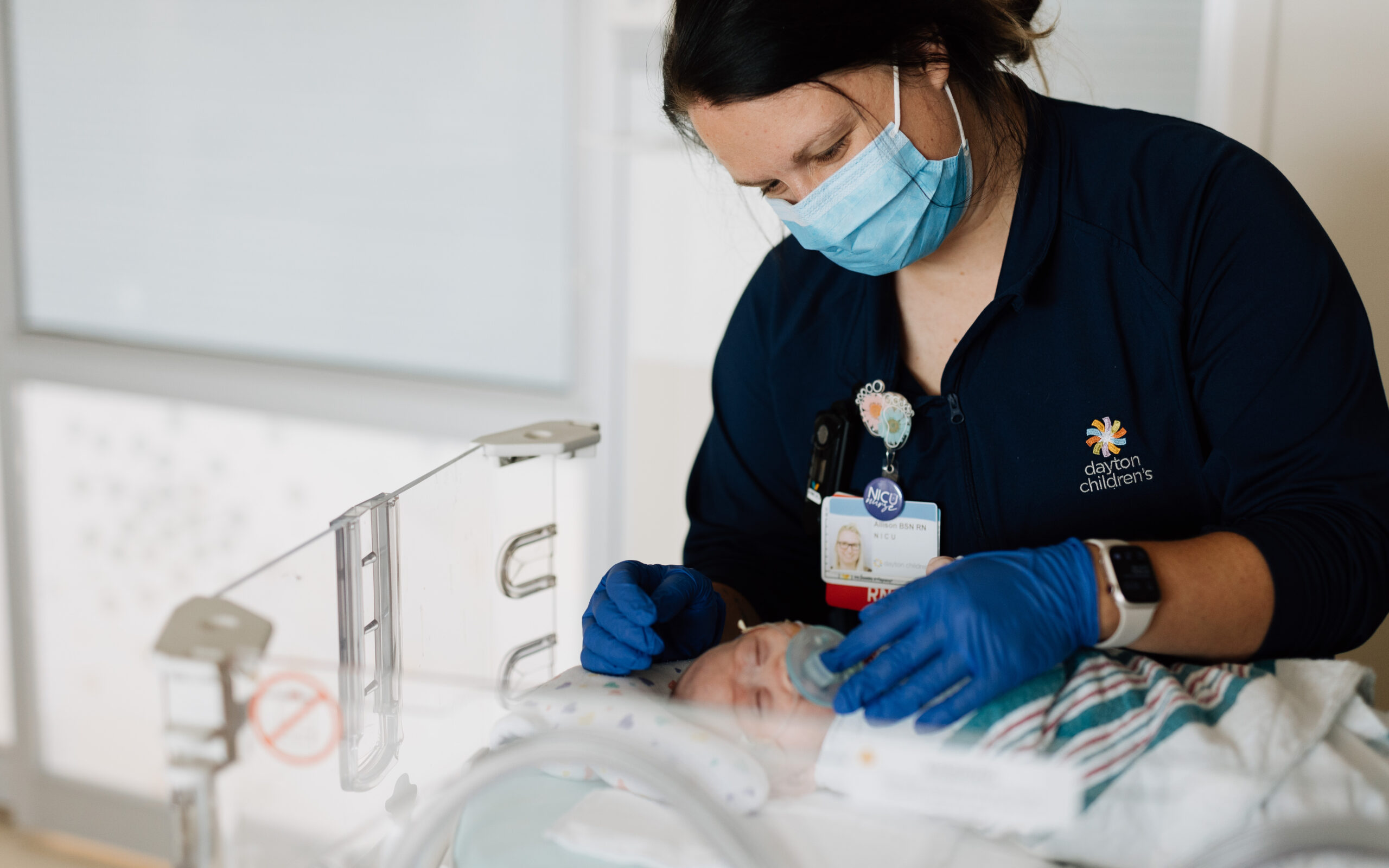
the dayton children’s difference
Dayton Children’s is the region’s most comprehensive level IIIB newborn intensive care unit (NICU), caring for more than 800 babies yearly. Newborns who come to us have a 99% survival rate and a low number of complications. With 32 private rooms we care for the region’s sickest babies, many born weeks early and some weighing less than one pound.
family-centered care
We are passionate about providing family-centered care in a child-friendly, healing setting. Our family-centered care ensures that you will be a partner in your infant’s care and treatment. Your family is an important part of our team. We believe families are powerful partners in health care and vital to the healing process of critically-ill newborns.
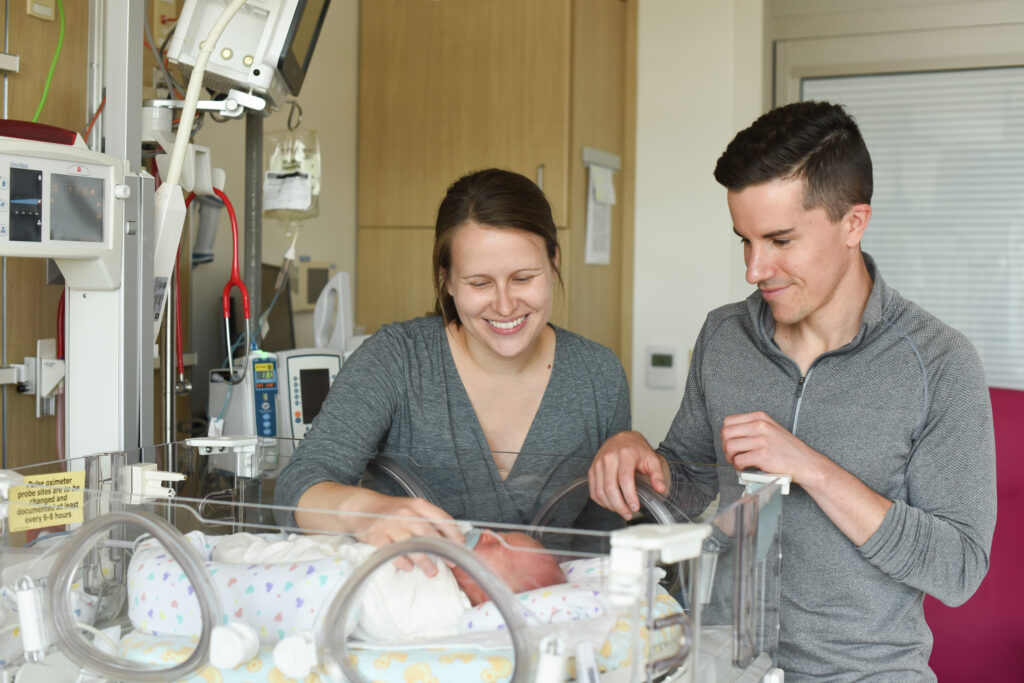
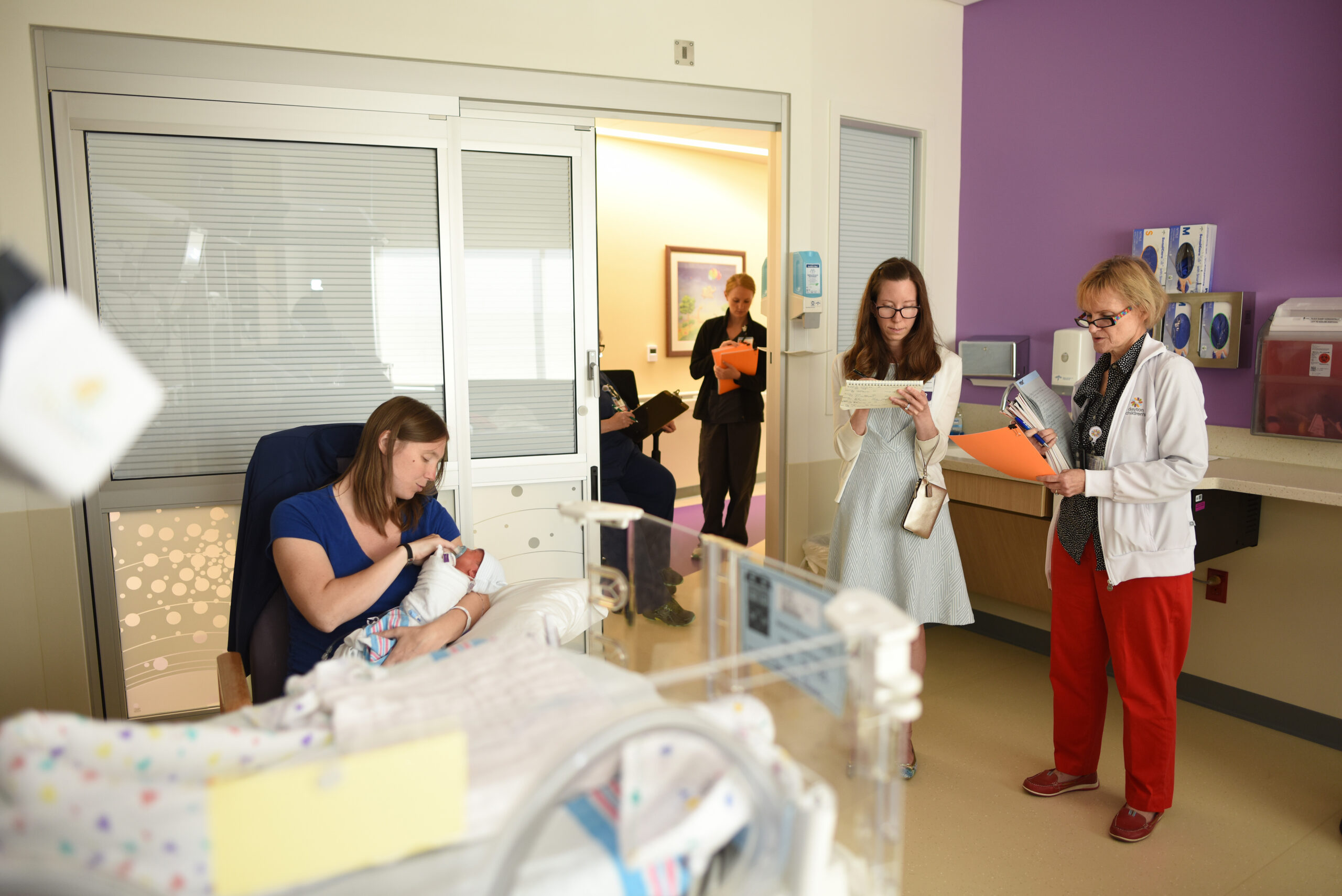
expert team, trusted care
We work together to provide the best outcomes for our tiniest patients. Our neonatologists are specially trained to care for premature and critically ill newborns, and they partner with nurses, respiratory therapists, and specialists from more than 50 areas of pediatric medicine.
This teamwork means every baby receives individualized care, from advanced procedures to daily support that helps them grow stronger. Families are always part of the process, because we know parents and caregivers are essential members of the care team.
With decades of experience, advanced training, and a shared dedication to compassion, our NICU team is committed to giving each baby the safest start and every family the reassurance of knowing they’re not alone.
advanced technology
From monitoring systems to specialized equipment, our NICU uses state-of-the-art technology to support healing and growth, including:
- Giraffe® OmniBeds – soothing, womb-like beds that promote development
- AngelEye cameras – secure video access so families can see their baby anytime, anywhere
- Advanced monitoring systems – continuous tracking of vital signs for safety
- Refrigerated drawers – in-room storage for breastmilk and formula
- GetWellNetwork – an in-room system with education and entertainment for families
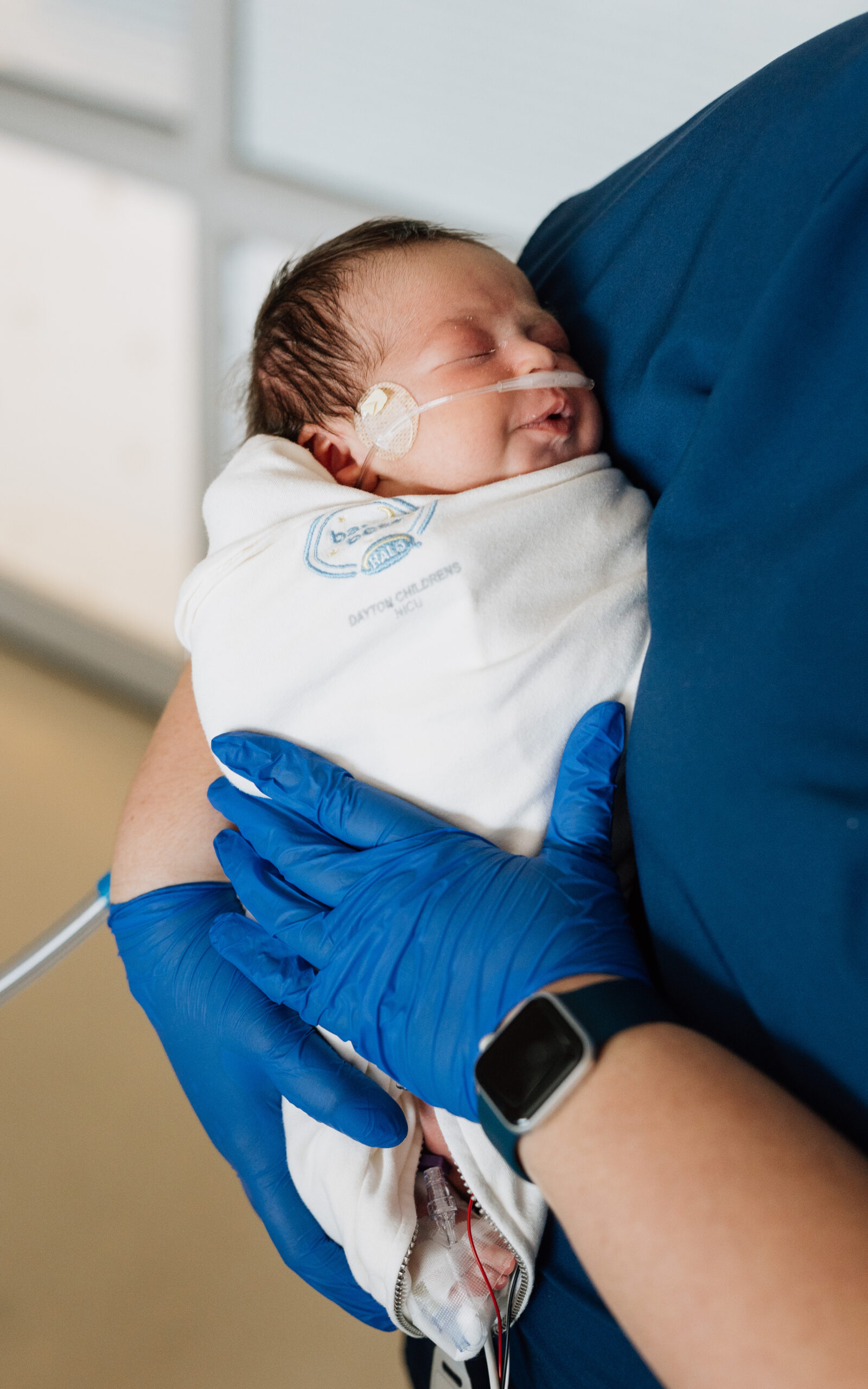
our newborn intensive care specialists
Our NICU is led by board-certified neonatologists and supported neonatal nurse practitioners and specially-trained nurses. They are also supported by a multidisciplinary team of specialists from more than 50 areas of pediatric medicine. Together with nurses, respiratory therapists, dietitians, lactation consultants, therapists, social workers, pharmacists, chaplains, and more, we coordinate care that meets each baby’s unique needs — with the shared goal of getting them home safely.
conditions we treat
The NICU at Dayton Children’s provides expert care for premature and medically fragile newborns, as well as babies with rare or complex conditions that require surgery or other specialty support. We are the only NICU in the region equipped to perform surgery on these infants, ensuring advanced care close to home.
In rare cases, babies may need a type of care not available at Dayton Children’s, such as open-heart surgery. When this happens, our team works closely with families to coordinate a safe transfer to the right hospital and then provides comprehensive follow-up care once the baby returns.
programs & clinics
Outside of the care provided to infants in our newborn intensive care unit, our team also partners with or provides the following programs and services:
Specialists at Dayton Children’s work closely with physicians throughout our community to provide the best possible care for babies during pregnancy and in the early stages of life.
Our expertise and experience, along with input from a referring physician, will guide the creation of an individualized care plan based on the needs of each family. This unique plan may include diagnostic tests such as ultrasound, fetal MRI and genetic testing, innovative procedures and interventions, and specialized care after birth.
Dayton Children’s provides ground transportation for critically ill and injured children who need to be transferred to or from the hospital and another facility. Our fully equipped transport vehicles serve as medical intensive care units, and are staffed by highly trained, experienced nurses and respiratory therapists.
Patients who are transported from other hospitals to Dayton Children’s may include:
- Newborns who need to be transferred to the Dayton Children’s newborn intensive care unit
- Patients who need a higher level of care than another hospital is able to provide
- Children who were hospitalized at a distant facility and want to receive care closer to home
- In some rare situations, patients are transferred from Dayton Children’s to another facility for care. One example is when an organ becomes available for a child who has been awaiting a transplant.
Our average dispatch to departure time is 15 minutes, and our team has easy highway access from all points in the region. Dayton Children’s can also make arrangements for air transportation when patients need to travel to or from a distant hospital.
We believe breast milk gives our NICU babies the healthiest start. While we encourage and support mothers to provide their own milk whenever possible, some may not produce enough or be able to pump.
To ensure every baby has access to this vital resource, we partner with the Mothers’ Milk Bank of Ohio. All babies born weighing less than 3 pounds, 5 ounces may receive donated breast milk, with guidance and support from our lactation consultants. When breast milk isn’t an option, our team will discuss safe alternatives such as formula and fortifiers.
We are deeply grateful to the mothers who donate milk to help our tiniest patients thrive. If you’re interested in becoming a donor, connect with the OhioHealth Mothers’ Milk Bank by visiting their website or calling 614-566-0630
Our clinical nutrition lab helps ensure every baby in the NICU receives the exact nutrition they need to grow and thrive. Staffed by specially trained technicians, the lab prepares and tracks breast milk and formulas — from adding calories to breast milk for extra growth support to providing specialized formulas when needed.
Technicians visit your baby’s room 1–2 times each day to collect milk, which is then scanned into our barcode system. This system records important details like time, date, and expiration, and tracks your baby’s milk until it’s ready to be fed. At feeding time, the barcode is scanned again to confirm the right milk, fortification, and timing — adding an extra layer of safety and peace of mind.
For families with extra stored milk, the lab also provides secure freezer storage to extend its use.
Babies who begin life in the NICU often need specialized follow-up care to ensure they continue to grow and develop as expected. Our high-risk newborn follow-up clinic provides screenings, evaluations, therapies, and referrals, along with education and support for parents. A team of developmental specialists, physicians, nurses and therapists work together to give your baby the best start beyond the NICU.
news and blogs
Stay up-to-date with the latest insights from Dayton Children’s Hospital. We’re always working to share helpful, real-world content for families navigating newborn intensive care.
patient stories
Real families, real results. Our patients and families inspire us every day. These stories offer hope, guidance and reassurance that we are here for your child every step of the way.
Explore how Dayton Children’s newborn intensive care unit has gone above and beyond for kids just like yours.
for your visit
We never lose sight of the fact that these tiny babies are precious to their parents, grandparents and siblings. Our goal is to make families feel welcome in our unit and help them prepare for the day when their child is able to go home.
Below is some helpful information for your visit. You can find more resources for family’s stay in the NICU here.
family lounge
We understand the importance of remaining close to your baby. Our family lounge provides a quiet place to enjoy a moment of rest and relaxation during your baby’s stay. The family lounge is open to families and visitors of NICU babies.
visiting hours
As a parent, you are the most important member of your baby’s team and can visit anytime. For the security of all babies, when you arrive at the Dayton Children’s NICU entrance, stop at the desk to check in with a NICU staff member.
We offer open visiting hours for all family members. Parents, grandparents and siblings are permitted to visit any time, although we do ask that siblings at least 1 year old and be up to date on their immunizations, including chicken pox immunity and not showing signs of a contagious illness.
Other family members and friends are welcome any time as well, but must be accompanied by a parent of the baby at the bedside. Visiting may be restricted if there is a community-wide contagious disease outbreak such as flu, RSV, whooping cough etc…This will be communicated on our website. We do ask that if family members have cold or flu-like symptoms to please refrain from visiting in order to protect our fragile infants.
find more resources for your visit
Get checklists, resources, and helpful tips for before, during, and after your visit to Dayton Children’s—so you know exactly what to expect.
resources – newborn intensive care
patient resources
- Support services
- NICU family guide
- The Ronald McDonald Family Room: The Family Room offers parents, guardians, grandparents and siblings a quiet place to have a break, take a nap in a nap pod, take a shower or do laundry, all at no cost. The Family Room also has coffee, snacks and lite meal options.
- The Ronald McDonald House:. Available to our patients’ families, the Ronald McDonald House can be a home away from home when a child is facing hospitalization. Located just across the street from our main campus, it has bedrooms with private baths, a large kitchen with hot meals provided, multiple family rooms, as well as a play area, laundry facilities, a patio and free parking.
community resources
- CaringBridge.org: Create an account to share health updates, photos and videos with people who care about you.
choosing a pediatrician
We need to know which doctor you have chosen to care for your baby after going home. Some insurance companies require that you identify the pediatrician within the first 30 days of life. We will contact the pediatrician and keep them updated on your baby’s progress. This helps the pediatrician take over the care of your baby after leaving the NICU to go home. If you need help in selecting a pediatrician, visit our provider directory.
support for NICU families
Having a baby in the NICU can feel overwhelming, but you’re not alone. Dayton Children’s offers resources to guide and support you during your baby’s stay and beyond.
